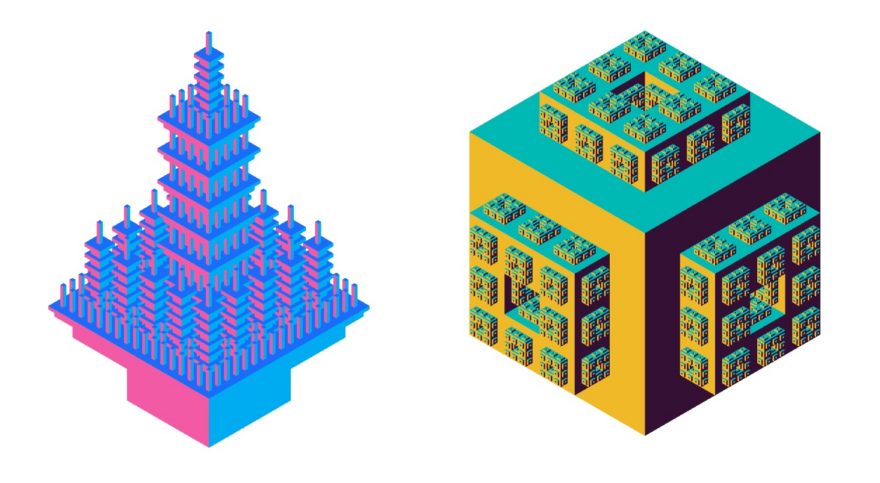There’s a sort of serene pleasure that comes from uniform design schemes. Whether it’s a car with two identical sides, a train that could be perfectly split in half, or a skyscraper in an evenly cubical shape; orderly architecture gives off a sense of harmony and pleasure to the viewer. These endeavors are testaments to the power of organization and stability. But why should we be confined to simply enjoying these designs as onlookers? Why not create our own?
Nico Disseldorp’s online project Castles Made of Castles is a love letter to orderly architecture. Described as a “geometry toy,” Disseldorp’s work combines fractals and voxels, allowing players to build their own unique designs—or castles—inside the toy.
Disseldorp’s project starts with a plain blank cube, and the ability to add an additional cube onto the structure. With each cube the user adds, the castle’s individual pieces mirror itself. This leads to a geometrical structure where, as Disseldorp explains, “the pieces are the same as the whole.” While simple at first, designs quickly become complex three-dimensional objects, leading to gigantic geometrical contraptions that are as sophisticated as they are beautiful.

Of course, Disseldorp’s interactive geometry project isn’t just confined to a single browser session. When users are satisfied with their design, they can copy their castle’s URL and share it across the internet. This allows players across the world to exchange their work, showing off the amazing structures that can be created with a careful bit of planning. For a few examples, take a look at this structure created by digital artist Loren Schmidt, or this triangle designed by illustrator Vondell Swain.
Castles Made of Castles was originally commissioned for the Now Play This festival at London’s Somerset House. The project is available free online, and sharing castles is highly encouraged. For more of Disseldorp’s work, check out sciencevsmagic.net.
